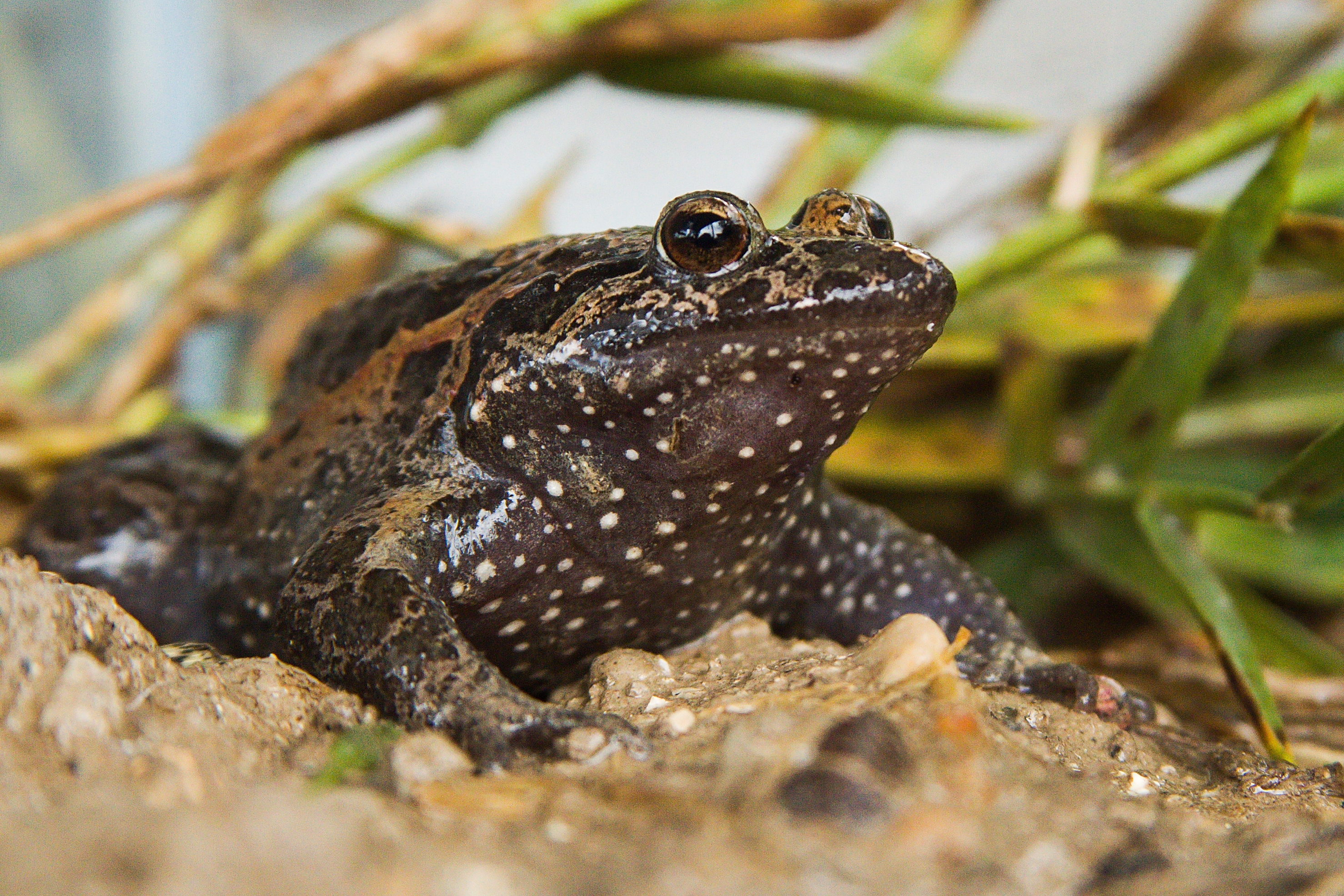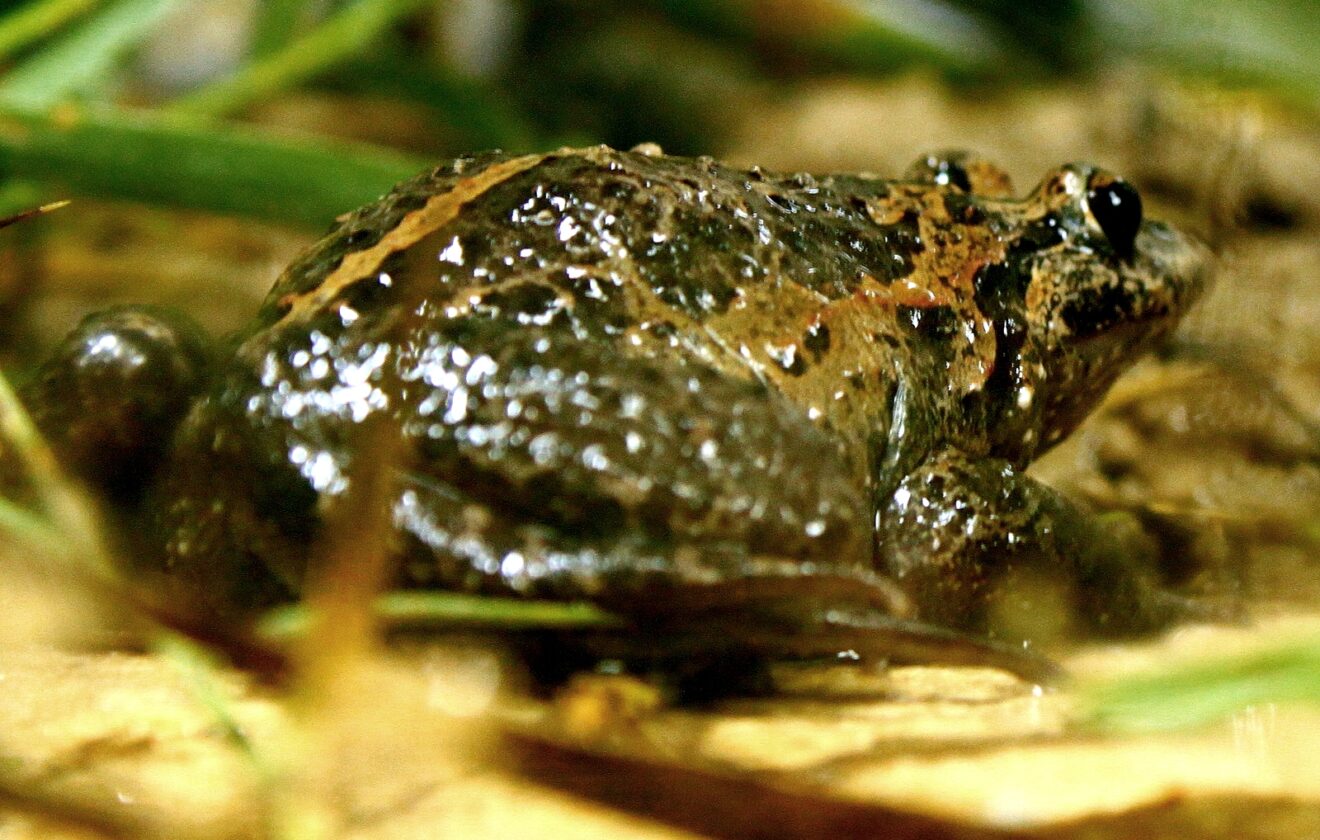- An Enigmatic Amphibian Rediscovered: The Fascinating Story of Latonia Nigriventer
- Taxonomy and Classification: Tracing Evolutionary Roots
- Natural Habitat: The Hidden Jewel of Israel's Hula Valley
- Physical Characteristics: A Living Fossil Defined by Subtle Beauty
- Behavior and Life Cycle: Secretive Lives Within the Wetlands
- Ecological Role: Guardians of Environmental Stability
- Threats and Conservation Status: From Near-Extinction to Hopeful Recovery
- Cultural and Scientific Significance: Bridging Nature and Humanity
- Conclusion: Preserving the Legacy of Latonia Nigriventer
An Enigmatic Amphibian Rediscovered: The Fascinating Story of Latonia Nigriventer#
In the mystifying wetlands of Israel’s Hula Valley, beneath the cover of dense foliage and amid the trickling waters of marshy ponds, lives a creature whose story almost ended without notice. Latonia nigriventer, more commonly known as the Hula Painted Frog, is a remarkable albeit elusive amphibian, once presumed extinct and later rediscovered. Its tale involves mystery, tragedy, and hope, reflecting humanity’s influence on nature and our power—and responsibility—to restore ecological balance.
Declared extinct in 1996 yet miraculously rediscovered fifteen years later, the Hula Painted Frog is now emblematic of conservation triumphs worldwide. But what is it about this small amphibian that has captured the imagination of scientists and conservationists alike? Let’s journey together into its hidden world and discover its captivating secrets.
Taxonomy and Classification: Tracing Evolutionary Roots#
Initially identified in 1940, the Hula Painted Frog was classified under the genus Discoglossus, but years later, groundbreaking genetic analysis unveiled surprising results. In 2013, researchers studying DNA samples placed the frog in its own resurrected genus, Latonia—an ancient genus previously considered extinct for millions of years. Thus, Latonia nigriventer became a true living fossil, connecting us directly to a distant amphibian lineage dating back to prehistoric times.
Today, the Hula Painted Frog (Latonia nigriventer) belongs to the family Alytidae, sharing ancestral ties with midwife toads and painted frogs of Europe. Its rediscovery reshaped scientists’ understanding of amphibian distribution, highlighting the enduring resilience of species that often evade human detection even in highly studied ecosystems.
Natural Habitat: The Hidden Jewel of Israel’s Hula Valley#
A Lost Paradise Rediscovered#
Latonia nigriventer finds refuge exclusively in northern Israel’s enchanted Hula Valley. Here, ancient wetlands once sprawled lushly, teeming with life—an Eden for amphibians, birds, and aquatic plants. For thousands of years, this vast swamp provided the perfect conditions for the frog’s quiet, secretive life: gentle waters, rich vegetation cover, and ample prey. Sadly, human intervention drastically altered its habitat through extensive drainage in the 1950s, transforming wetlands into agricultural land and almost driving this rare amphibian to extinction.
An Amphibian’s Ideal Ecosystem#
Today, thanks to significant environmental recovery efforts, sections of the Hula wetlands are restored. Under dense cover of aquatic plants including reeds, sedges, and water lilies, Latonia nigriventer thrives again. Preferring shallow freshwater habitats, it hides within muddy banks, concealed among decaying leaf litter and sedges, emerging under the calm cover of darkness to forage and mate. The restoration efforts not only revived Latonia’s homeland but provided crucial sanctuary for countless other species dependent on these fragile ecosystems.
Physical Characteristics: A Living Fossil Defined by Subtle Beauty#
At first glance, the Hula Painted Frog may seem unremarkable, cloaked in muted colors perfect for camouflage. Adults measure roughly 6-8 cm long, possessing stocky, robust bodies ideally suited to their semi-aquatic existence. They have rounded snouts, large expressive eyes adapted for nocturnal hunting, and muscular hind limbs that allow them efficient movement through their aquatic habitats.
The coloration varies subtly, most individuals exhibiting earthy hues such as deep olive, brown, or grayish-brown tones, marked occasionally with darker, irregularly-shaped blotches or spots along the skin. Their ventral side—the belly—is often darker, hence its Latin epithet “nigriventer,” meaning “black-bellied.” Such cryptic coloration not only helps Latonia nigriventer blend seamlessly into its marshy habitat but also significantly reduces predation risks.
Its skin texture, slightly bumpy and moist, provides valuable moisture retention, enabling survival in post-drainage and drought-affected environs. Moreover, like many amphibians, their permeable skin makes them sensitive ecological indicators, responsive to water purity changes and environmental health.
Behavior and Life Cycle: Secretive Lives Within the Wetlands#
Nocturnal Hunters of Aquatic Prey#
As darkness descends over the Hula marshes, Latonia nigriventer emerges quietly to forage. Opportunistic predators, these frogs feed predominantly on various invertebrates, such as insects, mollusks, worms, and small crustaceans found near water bodies. Their ambush hunting strategy relies heavily on stealth, keen senses, and accurate timing, making them efficient predators even amid the shadows of aquatic plants and submerged roots.
The Unique Mating Rituals and Development#
Little was initially understood about their reproductive behaviors—a mystery gradually unraveled through careful observation following rediscovery. Like many amphibians, their breeding is seasonal, dependent upon rain patterns and water availability. Males typically initiate courtship by producing low-pitched calls beneath water surfaces, attracting females during ideal breeding conditions.
Upon successful mating, females deposit egg clusters submerged carefully amid dense vegetation, frequently adhering them to sturdy plant stems to ensure protection against currents and predators. Larvae (tadpoles) undergo metamorphosis under safe cover, becoming fully developed frogs after a few months, depending on environmental conditions.
Ecological Role: Guardians of Environmental Stability#
Despite their quiet, unassuming presence, Latonia nigriventer provides critical ecosystem services within their habitat. As predators, they help regulate insect populations, contributing significantly to balanced aquatic communities. Equally important as prey, they nourish larger predators including birds, fish, and larger amphibian species.
Further, amphibians like Latonia nigriventer serve crucially as bio-indicators. Being especially sensitive to pollutants, habitat degradation, and climate change impacts, they alert us—often dramatically and instantly—to broader environmental threats. Monitoring their populations thus reveals critical insights into ecological health and prompts conservationist interventions.
Threats and Conservation Status: From Near-Extinction to Hopeful Recovery#
Environmental Changes and Initial Decline#
Historically abundant, the drastic drainage and agricultural conversions severely reduced the frog’s original wetland habitats. These devastating human-engineered alterations eradicated extensive areas where Latonia nigriventer fed and bred, contributing directly to its rapid decline by mid-twentieth century.
A Miraculous Rediscovery and Conservation Triumph#
Initially declared extinct, dedicated naturalists’ stunning rediscovery in November 2011 rekindled conservation hopes worldwide. Listed by the International Union for Conservation of Nature (IUCN) as Critically Endangered, significant protective efforts followed rapidly. The Israeli government, alongside international conservation organizations, prioritized targeted habitat restoration, water management reforms, and extensive protection measures safeguarding surviving populations.
Today, while populations remain carefully monitored and vulnerable, the future watches guardedly optimistic, emphasizing continued restoration, public awareness campaigns, and collaborative research efforts.
Cultural and Scientific Significance: Bridging Nature and Humanity#
Latonia nigriventer has transcended ecological significance alone. It symbolizes remarkable resilience in the face of seemingly catastrophic losses—a testament to nature’s astonishing adaptability. Scientists worldwide view its survival as a crucial learning opportunity, examining evolutionary processes, adaptations, and amphibian conservation methodologies that apply globally.
Moreover, culturally, its rediscovery contributed renewed pride around Israel’s environmental consciousness. Local communities today embrace the frog’s symbolism, integrating conservation messages in education, tourism, and cultural narratives, strengthening regional conservation commitments and celebrating a powerful story of ecological stewardship.
Conclusion: Preserving the Legacy of Latonia Nigriventer#
The Hula Painted Frog’s journey from near-certainty extinction to a hopeful renaissance demonstrates how intentional human action can drastically change the trajectory for endangered species. Latonia nigriventer reminds us emphatically of nature’s fragility and strength, underscoring our role as responsible stewards of biodiversity.
But conservation victories rely profoundly on widespread awareness and sustained involvement. You, too, hold power. Join local or global conservation initiatives, support organizations protecting vital habitats, or simply share Latonia nigriventer’s incredible story. Together, through informed decision-making and compassionate stewardship, we can secure futures not only for incredible creatures like the Hula Painted Frog but also for the planet we collectively inhabit.

















